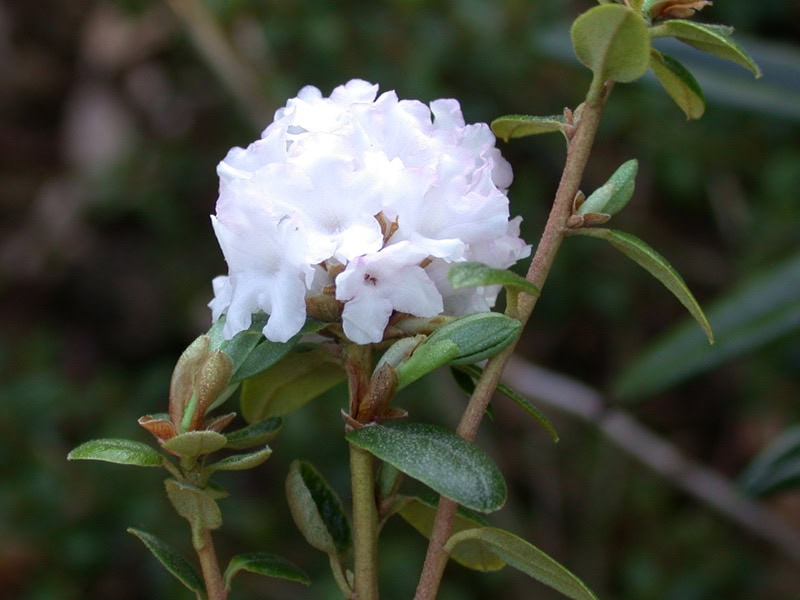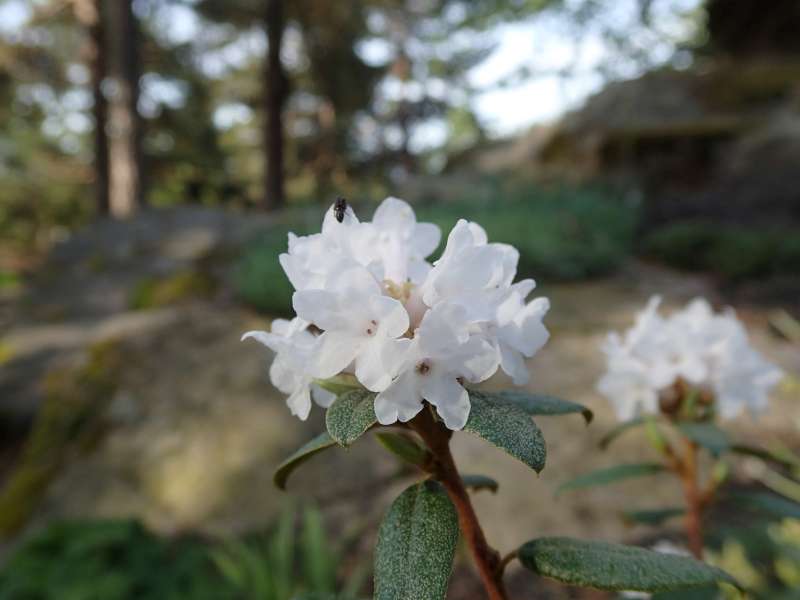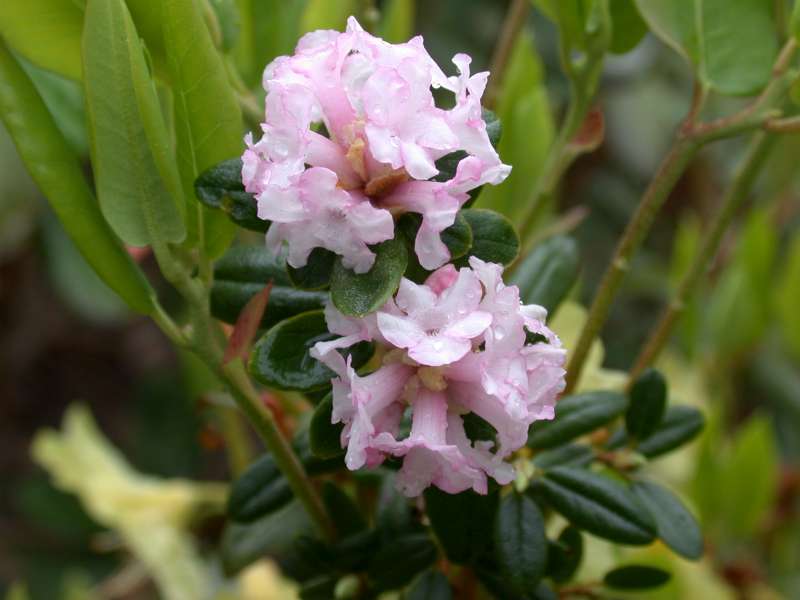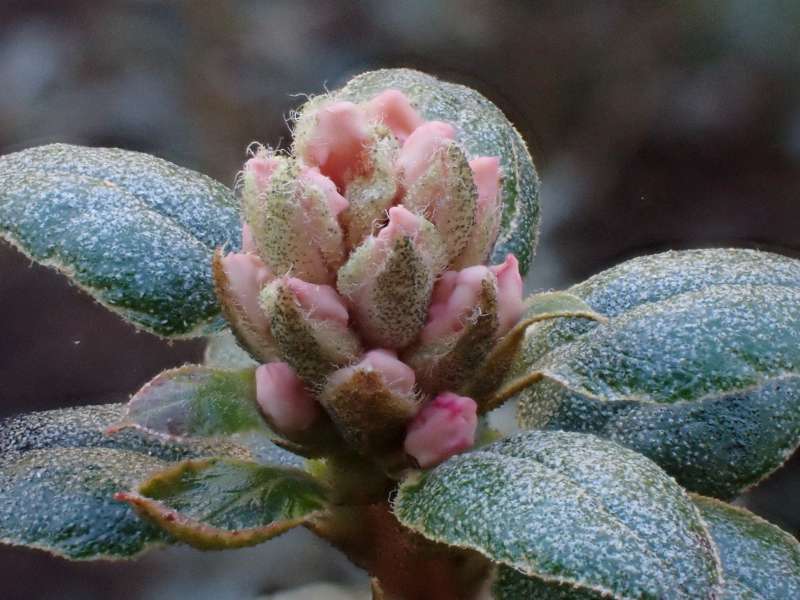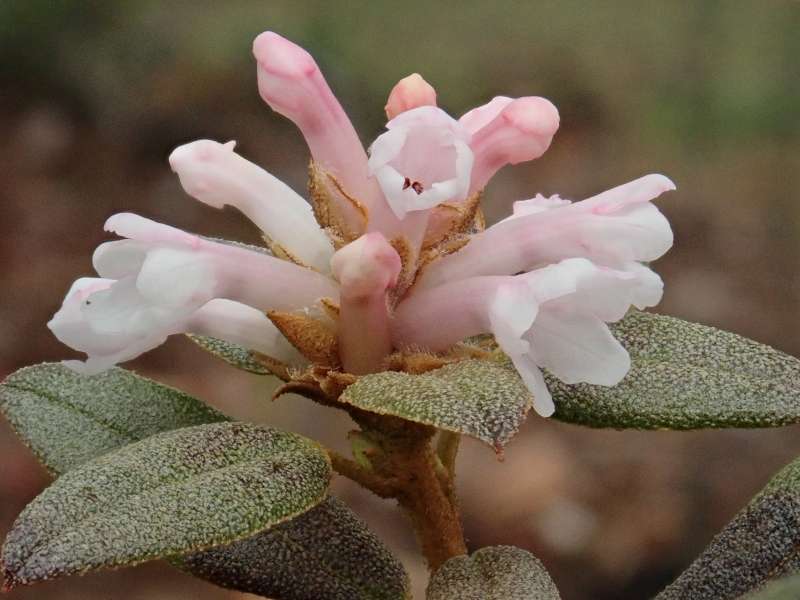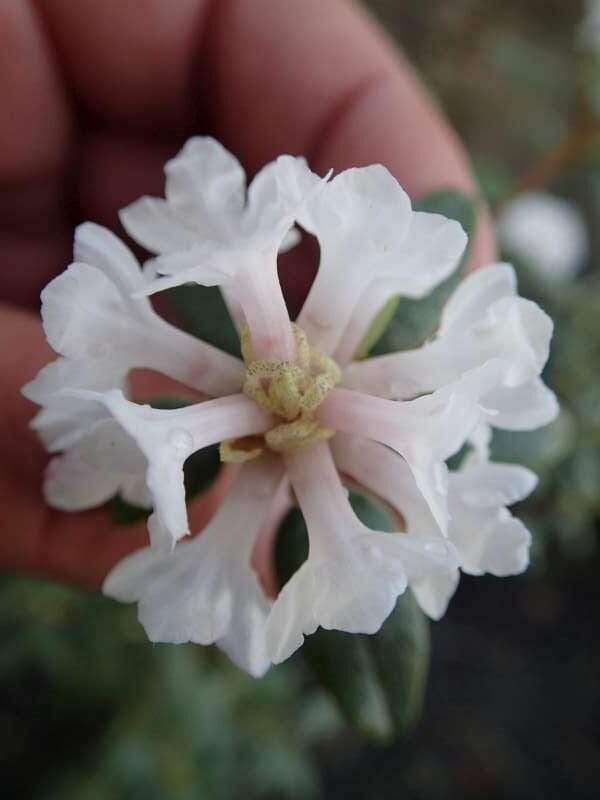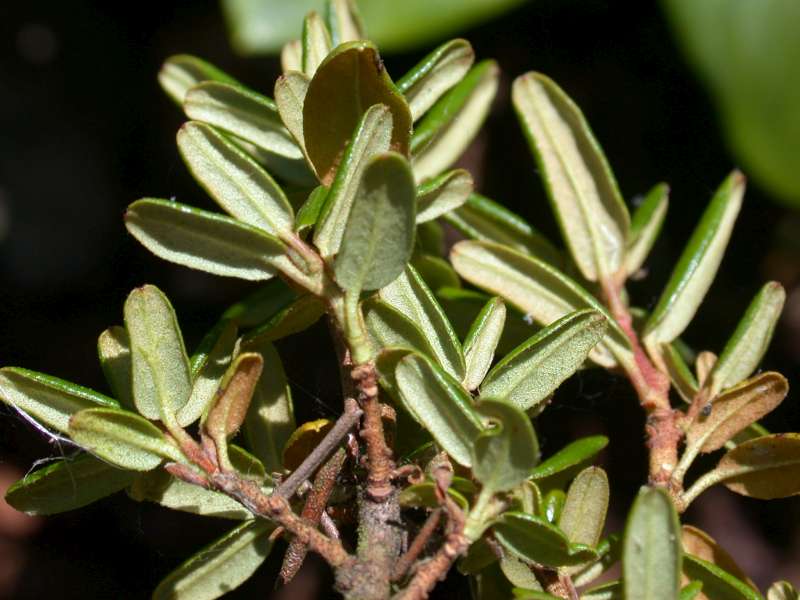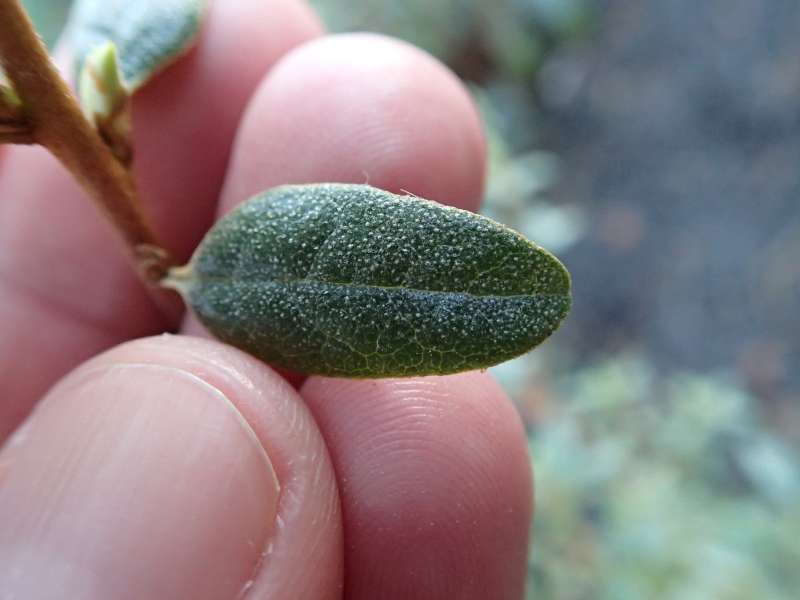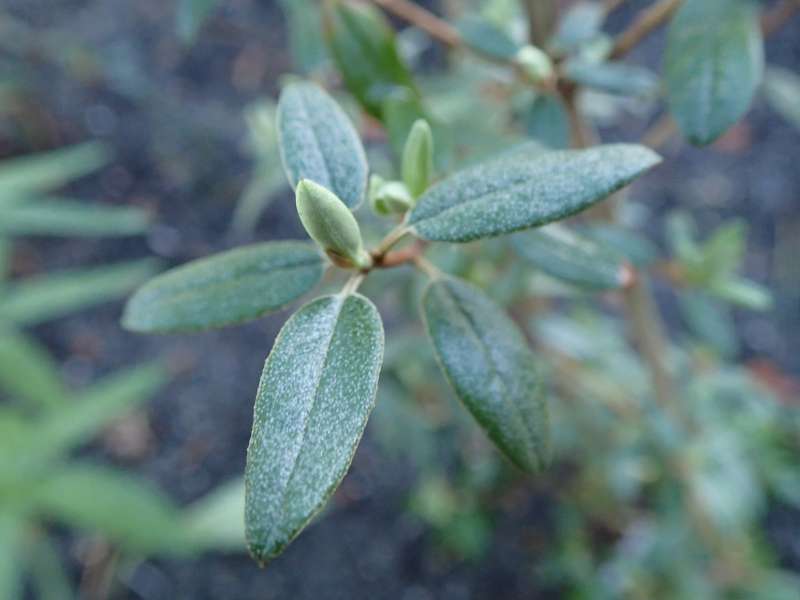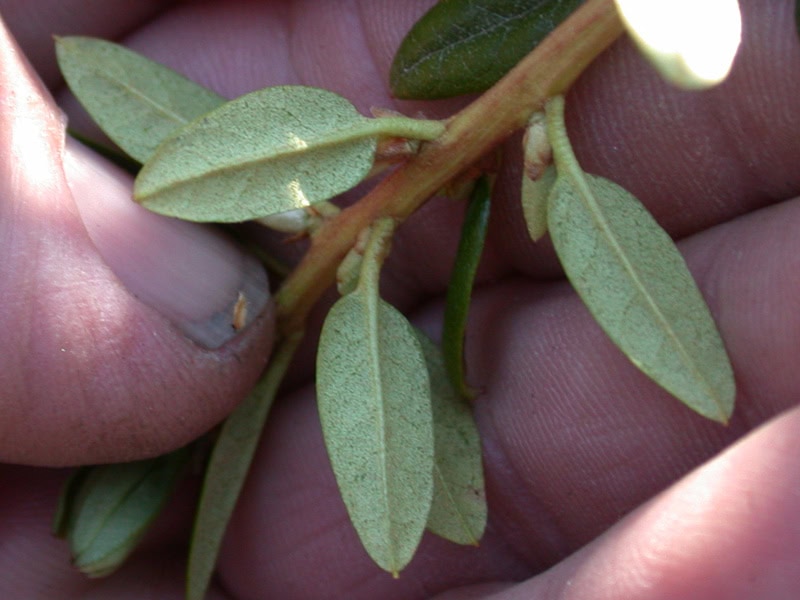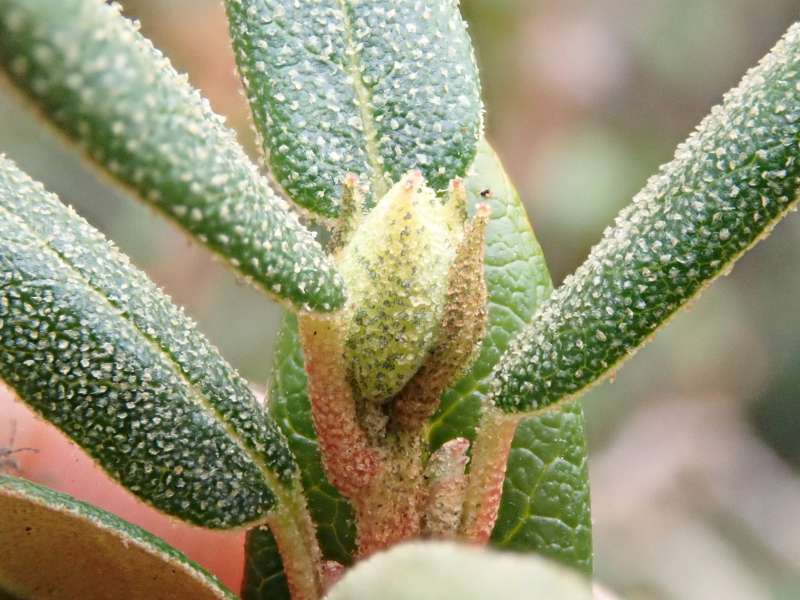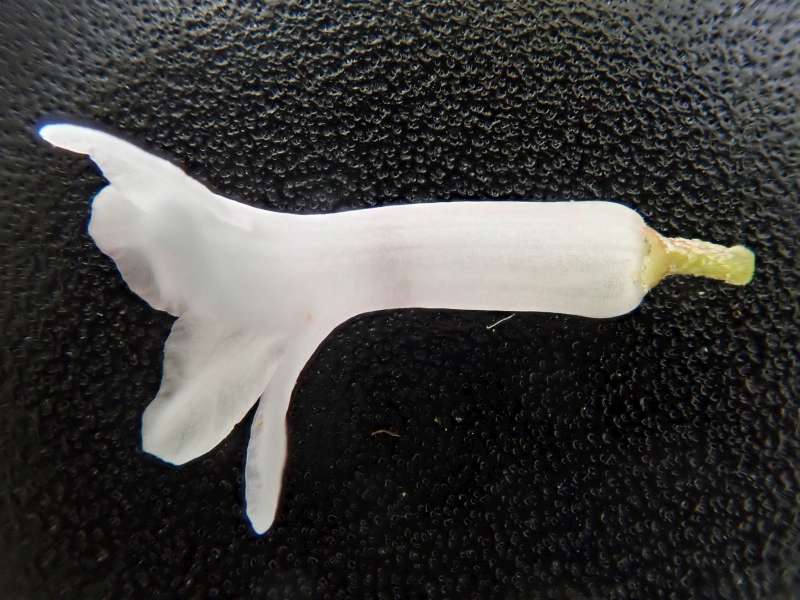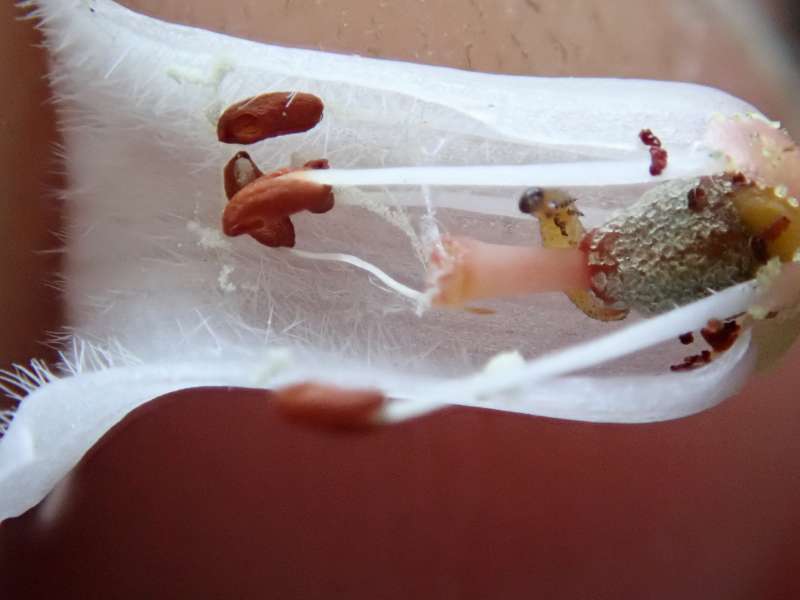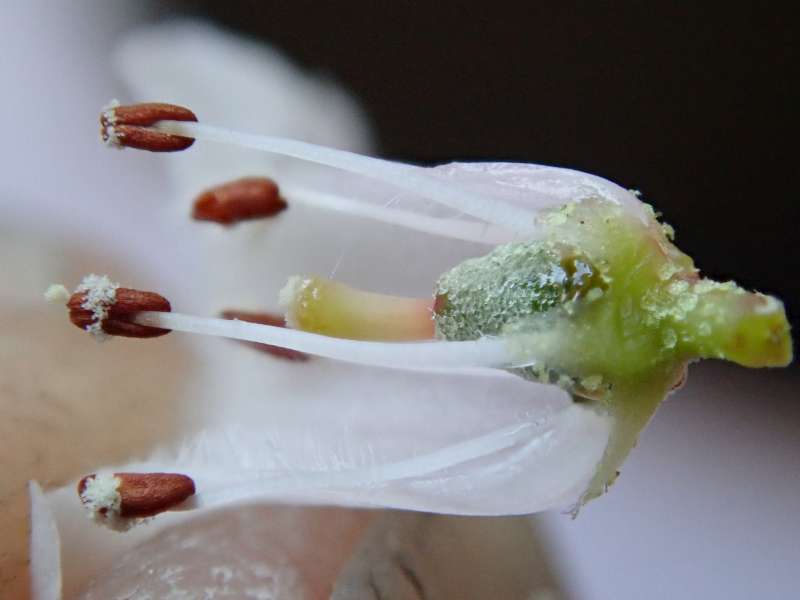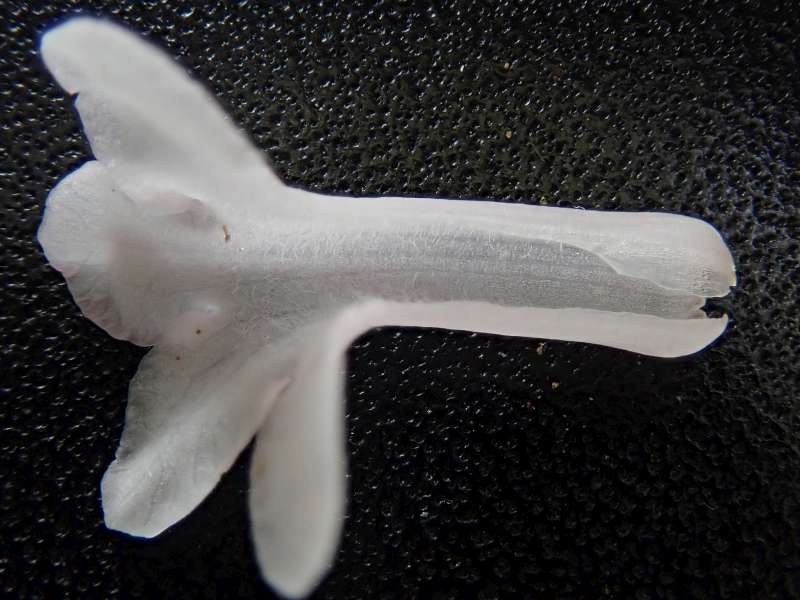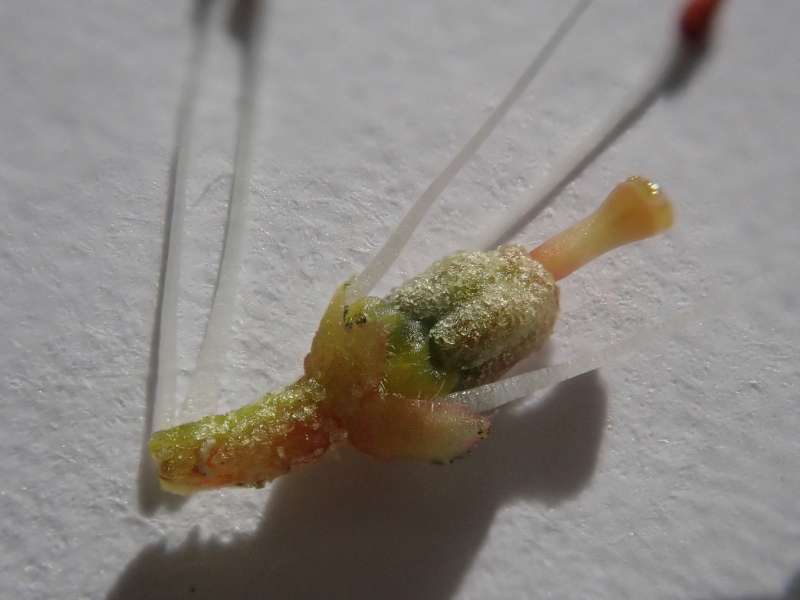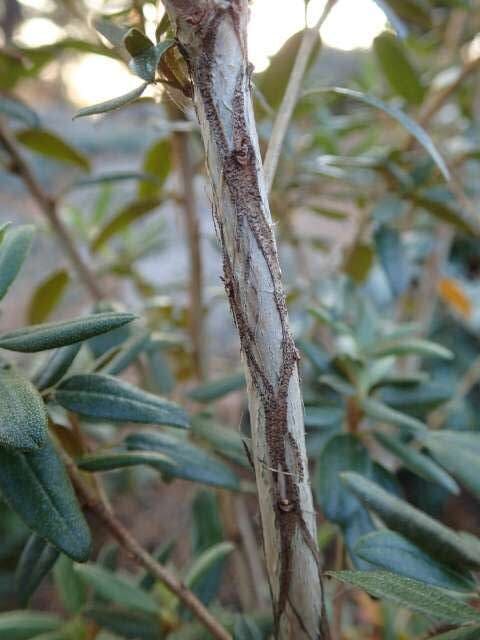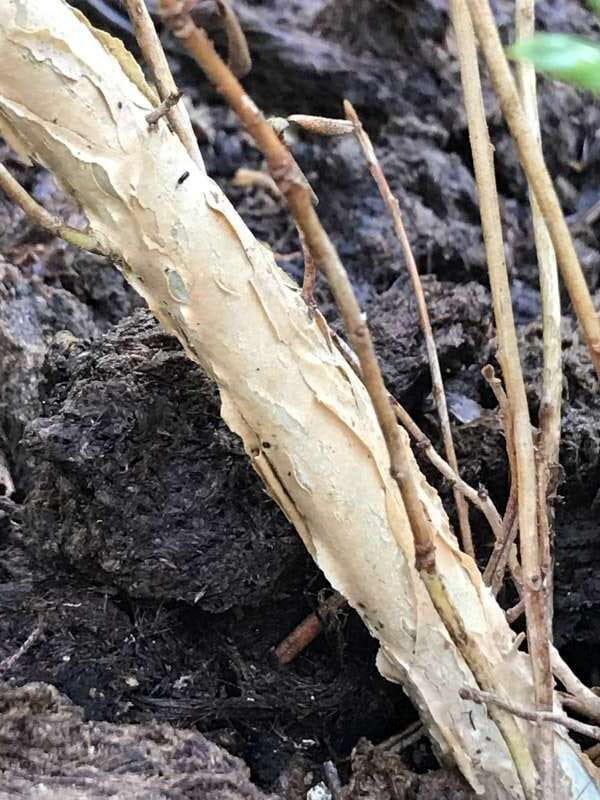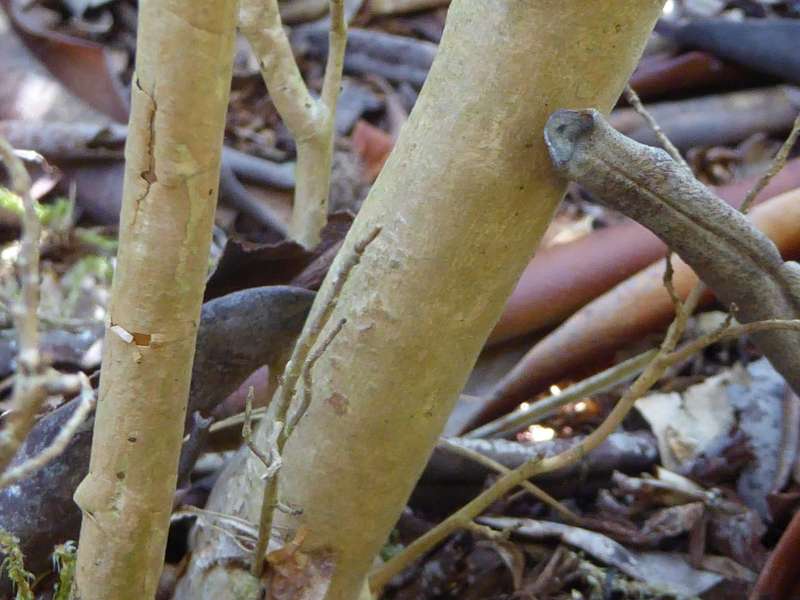Rhododendron hoi
Billeder af Rhododendron hoi
Beskrivelse
R. anthopogonoides ssp. hoi (Pogonanthum) (anthopogonoides subsp. hoi). Bladundersiden grøn-lysebrun. Opretvoksende. Vokser i Sichuan. Genfundet i 2004 af Hans Eiberg.
Hans Eiberg
Flora of China
Rhododendron hoi W. P. Fang, Acta Sci. Nat. Univ. Szechuan. 1957(2): 216. 1957 [“hoii”]. Rhododendron anthopogonoides Maximowicz subsp. hoi (W. P. Fang) W. P. Fang & Z. X. Xiong. Shrubs, 0.6–1 m tall; branchlets blackish scaly. Petiole ca. 2 mm, scaly; leaf blade elliptic, 1.5–2(–2.5) × 1–1.2 cm; base rounded to broadly cuneate; margin somewhat revolute; apex acute, mucronulate; abaxial surface scales dense, brown or yellowish; adaxial surface shiny, glabrous. Inflorescence 10–12-flowered. Pedicel ca. 0.2 cm, glabrous; calyx lobes ca. 5 mm persisting to enclose mature capsule, glabrous except for the ciliate margin; corolla funnelform, pinkish, 1.3–1.5 cm, tube 7–9 mm, outer surface glabrous, inner surface villous; stamens 5, included within the tube, filaments glabrous; ovary ca. 1.5 mm, scaly; style ca. 1 mm. Capsule ca. 4 mm. Fl. Jun, fr. Aug. Mountain summits, ridges, grassy slopes; 3500–3600 m. NC Sichuan (Lixian, Maowen, Wenchuan). The original author suggested that this species has affinities with Rhododendron anthopogonoides and R. rufescens. From the original description, it may be close to R. primuliflorum.

